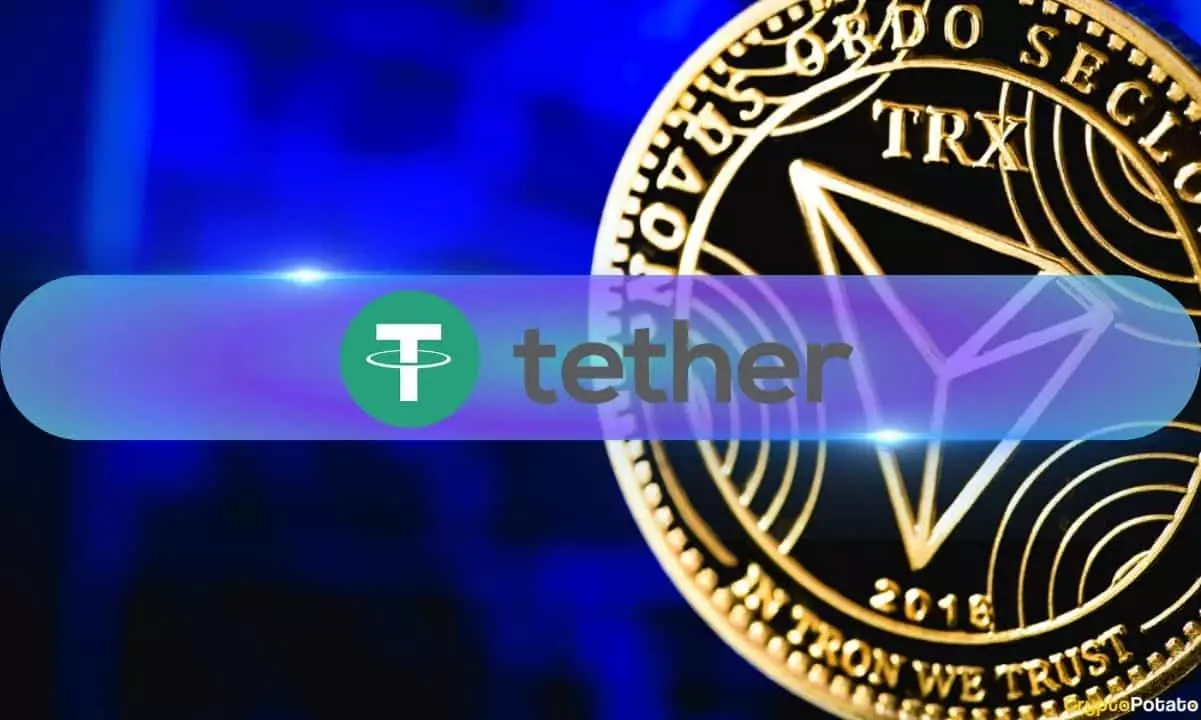In an increasingly fragmented digital currency landscape, Tether’s USDT has solidified itself as the undisputed leader in the stablecoin segment of the Tron network. Recent findings from CryptoQuant underscore this dominance, revealing that a staggering 98.5% of the total stablecoin supply on the network is attributed to USDT. With a circulating supply surpassing $62.76 billion and the overall stablecoin supply on Tron hovering around $64 billion, USDT stands as the backbone of Tron’s monetary framework. This striking disparity in dominance paints a vivid picture of how entrenched USDT has become within this ecosystem, outshining its competitors such as USDC and USDD, which collectively account for just a fraction of the total supply.
The landscape for alternative stablecoins appears bleak when juxtaposed against USDT’s overwhelming presence. Other tokens like USDC (0.06%), USDD (1.15%), TUSD (0.26%), and USDJ (0.01%) have failed to make significant inroads, with their supply stagnating since March 2024. This stagnation is particularly telling; while USDT has demonstrated both resilience and growth, these rival currencies have floundered, revealing a significant lack of market traction. The prevailing sentiment among crypto investors suggests a growing reliance on USDT, attributed to its liquidity and the comprehensive value it provides, making it increasingly challenging for other stablecoins to carve out viable niches.
Beyond its substantial supply, USDT serves as a vital instrument for liquidity within the Tron network. The asset’s daily on-chain transaction volume from centralized exchanges oscillates between an impressive $4 billion and $5 billion, particularly surging during fluctuations in TRX prices. Such a high volume is reflective of USDT’s essential role in trading and value transfer, significantly bolstering its justification as a stablecoin of choice among traders and everyday users alike. According to IntoTheBlock, over 14 million USDT transactions are performed weekly on the Tron network, a figure that represents a growing portion of USDT activities, up from 61% in January.
Tron’s ongoing commitment to enhancing the user experience sets the stage for an intriguing development: the introduction of commission-free transactions for USDT. As announced by Justin Sun, the founder of Tron, this “Gas Free” feature aims to render USDT transfers even more accessible by eliminating the prerequisite of TRX tokens for gas fees. Such integration could potentially revitalize Tron’s reputation as a cost-effective network for stablecoin transactions. However, a stark reality remains; despite its lower-cost reputation compared to Ethereum, recent data indicates that Tron has become among the more expensive networks for USDT transfers, with gas fees soaring to between $3.06 and $6.22.
The trajectory of USDT within the Tron ecosystem speaks volumes about its entrenched standing in the crypto world. As the landscape shifts and new initiatives like the Gas Free transactions are implemented, stakeholders will be eager to see whether USDT can maintain its dominance amid competitive pressures and evolving user expectations. The effectiveness of these enhancements will likely determine the future viability of USDT as a leading stablecoin in the digital currency market, reinforcing its pivotal role in Tron’s broader financial architecture.















